Delia and I chat music, dance, and more!Join Delia and me as we chat Latin dances, concept board books, the path to publication, and how to turn your contest entries into board books! Her set of three board books share Latin dance with the littlest learners, alongside some perfect content for kids: questions/manners, counting, and musical instruments. And, did I mention they are all bilingual?!? If you and/or your children are Spanish-speaking (or learning Spanish), these books would be fabulous for you! The text is in English AND Spanish all the way through and they are beautifully illustrated! Delia is offering a picture book manuscript critique as a giveaway! To be eligible, leave a comment on the blog episode by Wednesday Sept. 4, 2024 at 11:59 PM EST. Latin Dance board books for the earliest learners!Check out this super-fun series of Latin dance board books for your youngest learners (and all the others, too! "Picture books/board books are for everyone!"). Each book shares some fun Latin dance moves AND another concept: 1,2,3 CUMBIA focuses on Cumbia moves and bodily consent and manners in both Spanish and English! 1,2,3 SALSA shares some salsa dance moves and counting in English and Spanish! 1,2,3 MERENGUE teaches a bit about merengue moves, as well as lots of info about the instruments you might hear in merengue. Each book follows a similar format and shares information in English and Spanish. Great bilingual resources for kids learning English or Spanish, while also sharing other fun and age appropriate content about Latin dance and other concepts for young children. While these are perfect for littles (families, preschools, daycare centers, they would also transfer very nicely into ESL classrooms in primary/elementary schools, and for dance or music classes in the early grades as well. A Little Jam. . .(The Music Kind)Since I'm featuring all three books, I like this musical piece to showcase Latin music in general. It's a bit long (about 6 minutes), but engaging for kids. It would be fun to let littles just dance to the music. Of course, you could also point out the instruments as you go or you could give them accompaniment instruments like guiros or maracas and let them play along. Lots of ways to use this piece, but if you don't like this one, I have lots of others featuring the various dance styles, the instruments, kid-friendly Latin(ish) dances, counting in Spanish songs and videos and more! Check those out on the YouTube playlist. Teacher Tips, Tricks and TopicsMult-disciplinary topics for teaching/sharing these books (There are lots of specific ideas on the Pinterest board and YouTube playlist in the links section below. Be sure to check them out!)
Tips and Topics for Music Teachers |
|||||||||||||||||||
| piano_wants_to_play_activity_guide.pdf | |
| File Size: | 15909 kb |
| File Type: | |
Pinterest board with piano lessons, motivational thoughts, etc.
YouTube playlist full of piano pieces, lessons, teaching activities and lots more.
MY PIANO by Jen Fier Jasinski is a perfect companion book to this one. You can find the PBJamz episode here
*Be sure to check out the YouTube playlist and the Pinterest boards for that episode too, since there are lots of crossovers.
YouTube playlist full of piano pieces, lessons, teaching activities and lots more.
MY PIANO by Jen Fier Jasinski is a perfect companion book to this one. You can find the PBJamz episode here
*Be sure to check out the YouTube playlist and the Pinterest boards for that episode too, since there are lots of crossovers.
PBJamz Snack
Peanut butter and jelly cheesecake bars are delicious enough to help you or your young one power through the most grueling piano practice session, but elegant enough to serve at a celebratory recital -- or anything in between. Protein, tanginess, sweetness -- these bars have it all. Wanna make some of your own? Find the recipe here.
Guest Links and Giveaways
Below, find all of Colleen's socials and contact info.
If you'd like to purchase PIANO WANTS TO PLAY, here's the Amazon link, but if you have an indie bookstore nearby, we'd love for you to purchase from them.
Website: https://ckongsavage.com/
IG: https://www.instagram.com/kongsavage/
Bluesky: https://bsky.app/profile/kongsavage.bsky.social
Colleen has kindly offered a copy of PIANO WANTS TO PLAY along with some SWAG and a signed bookplate to one lucky winner! To be entered, simply leave a comment below.
If you'd like to purchase PIANO WANTS TO PLAY, here's the Amazon link, but if you have an indie bookstore nearby, we'd love for you to purchase from them.
Website: https://ckongsavage.com/
IG: https://www.instagram.com/kongsavage/
Bluesky: https://bsky.app/profile/kongsavage.bsky.social
Colleen has kindly offered a copy of PIANO WANTS TO PLAY along with some SWAG and a signed bookplate to one lucky winner! To be entered, simply leave a comment below.
Rainbows, positivity, music, and friendship . . .
If you're needing a dose of positivity, music and ways to change the world alongside a precious picture book and some sweet jammin' tunes, this episode is just right for you! Joni is absolutely precious and full of joy and a desire to share that joy with the world. No wonder she's an award-winning children's author and song writer. We had a great chat and we hope you enjoy joining us too!
RAINBOW OF FRIENDSHIP
Joni's first book, inspired by her daughters' girl scout days. From Bare Book to published, and award-wining, check out the interview to find out more about Joni's inspiration, writing process, and path to publication. Check out her website in the guest links section to purchase copies directly from her (and to see her other fabulous books and songs and plays.)
A Little Jam. . .(The Music Kind)
Check out Joni's very own song and the book trailer for RAINBOW OF FRIENDSHIP. Be sure to check the guest links below for where to access all of Joni's music, as well as my YouTube playlist for more fun songs and musical activities related to RAINBOW OF FRIENDSHIP.
| friendship1818.mp3 | |
| File Size: | 7875 kb |
| File Type: | mp3 |
Teacher Tips, Tricks and Topics
- Colors (Art/Science connection) --
- For preschool through kindergarten -- color identification
- For K-2, color mixing, primary vs. secondary colors
- Color poems
- Rainbow (Science connection)
- How do rainbows form?
- Colors of the rainbow in order (ROY G BIV)
- Friendship (SEL/Health/Social Studies connection)
- What makes a good friend'
- Friendship character traits
- How to be a good friend
- Being friends with people different than you
- Alliteration (ELA connection)
- Find examples in the book
- Write your own examples
- Alliterative sentences/poems with colors or about friendship
- Similes (ELA connection)
- Find similes in the book
- Write your own examples
- Color poems "As red as. . . ." etc. (Pinterest board)
- Rhyming (ELA connection)
- Find rhyming words
- Create your own rhyming pairs or word families
- Write rhyming couplets
- Adjectives (ELA connection)
- Find adjectives
- Write phrases or sentences with adjectives
- Besides color, what other adjectives can we use?
- PE connections
- Play hopscotch
- Kick the Can
- Hide-and-Seek
- Math connections
- Color patterns
- Create story problems from the book
Tips and Topics for Music Teachers
- This book would be a great companion to using Boomwhackers, bells, or color-coded solfege notation. (rainbow colors); could put the reds together, oranges, etc. and talk about how those sounds are the same (pitch); also could put sounds together (ie, CEG) and begin building chords; relate it to friendship.
- Rainbow songs (connecting science and music)
- Friendship songs (SEL)
- Rapping rhyming couplets
- Friendship song from Joni Klein-Higger
- Color songs
Writing Prompts from Tonnye
- Write a rhyming couplet about your favorite color. How many colors can you do?
- Write a simile poem about one color -- or a simile poem about the whole rainbow of colors. (Check the pinterest board for some ideas and templates.
- My Favorite Color is _______ because . . .
- Write your own story about neighborhoods where kids with differences learn to be friends.
- Do you think kids with differences can be friends? Why/why not?
- Create a Venn diagram about you and your friend. How are you alike? Different?
- Write a letter to your friend telling why they are a good friend.
- Write an acrostic poem with the word friend.
- Write an alliterative phrase or sentence with your name.
- Write a poem or story telling which color neighborhood you would live in and why.
- Write a letter from an Orange to a Purple.
- Write about how rainbows are formed.
- Write about a magical rainbow.
- Write a letter to the author and/or illustrator telling them why you like/don't like the book.
- THE GRAY RAINBOW (title)
Writing Tips from Joni
- Be a part of a writing community and utilize their offerings.
- Join an in-person or online critique group that specializes in your genre. If you already belong to one and want to become more prolific, consider joining a second group.
- Set goals - Daily, Yearly, and Long-term. For your daily goals, incorporate three positive things a day that move you closer to your yearly goals. Whether it be creating, researching, marketing, signing up for or reading an educational blog or newsletter, registering for an author/illustrator event, or critiquing your peers' work, these accomplishments add up and keep you moving forward on your creative journey. Remember, small wins are just as important as the big ones. For yearly goals, check in every couple of months to see how you are doing. Long term goals are great to look at whenever you need inspiration.
- Go out of your comfort zone. That is where the most growth happens!
Links, More Fun, Extensions for Families and Everyone!
Pinterest board full of activities for rainbow science, friendship, interviews with Joni and more!
YouTube playlist with songs about colors, rainbows, friendship, along with interviews with Joni and more.
YouTube playlist with songs about colors, rainbows, friendship, along with interviews with Joni and more.
PBJamz Snack
For this lovely book about friendship and rainbows, a rainbow of shortbread thumbprint cookies seems the perfect PBJamz snack for sharing. Gather jams and jellies in a rainbow of colors and create your own delectable cookie rainbow and celebrate friendship with your besties! Get the recipe here.
Guest Links and Giveaways
Social Links:
Joni’s Website: www.joniworld.com
Facebook: https://www.facebook.com/JoniKleinHiggerBooks/
X: https://twitter.com/KleinHigger
Instagram: https://www.instagram.com/jonikleinhigger/
Links to Joni’s Books
Barnyard Bubbe’s Hanukkah:
Barnyard Bubbe's Hanukkah
amazon.com
Ten Tzedakah Pennies:
Ten Tzedakah Pennies
amazon.com
Links to Joni Klein-Higger’s music: Joni's music is available on Spotify and most online music stores including, Apple Music, and Amazon Music.
Joni Klein-Higger
open.spotify.com
Joni Klein Higger
open.spotify.com
Joni’s Website: www.joniworld.com
Facebook: https://www.facebook.com/JoniKleinHiggerBooks/
X: https://twitter.com/KleinHigger
Instagram: https://www.instagram.com/jonikleinhigger/
Links to Joni’s Books
Barnyard Bubbe’s Hanukkah:
Barnyard Bubbe's Hanukkah
amazon.com
Ten Tzedakah Pennies:
Ten Tzedakah Pennies
amazon.com
Links to Joni Klein-Higger’s music: Joni's music is available on Spotify and most online music stores including, Apple Music, and Amazon Music.
Joni Klein-Higger
open.spotify.com
Joni Klein Higger
open.spotify.com
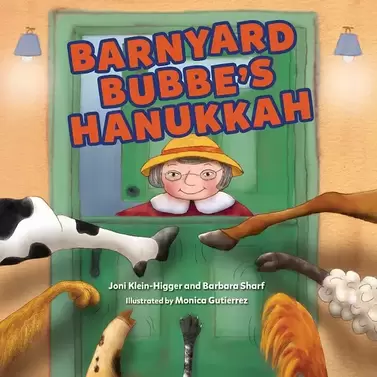
Joni is excited to share a copy of Barnyard Bubbe’s Hanukkah with one lucky winner. To be eligible to win, simply leave a comment below by 11:59 PM (EST) on May 1, 2024. Winner will be drawn at random from comments.
Down on the Farm chat with Kalee Gwarjanski
Come enjoy a chat on the farm -- MISS MCDONALD'S FARM. You'll enjoy your visit, although it's not your traditional moo moo here. Instead, it's an E-I-E-I-Grow(ing) experience. Join debut author Kalee Gwarjanski and me as we chat about musical inspiration, an AHmazing path to publication, and lots of fun chatter about this fun fractured farming tale. And be sure to check out all the resources below!
MISS MACDONALD HAS A FARM
It's "Old MacDonald" with a twist. MacDonald isn't old, and it's . . .a . . .girl! And, she doesn't have lots of animals on her farm, but she does have lots of plants! E-I-E-I-GROW! This book is perfect for everyone who has a green thumb (or wishes they did); great for our youngest gardeners and farmers. Enjoy learning about plant life cycles and the farm to table experience in a fun, familiar and engaging way with this lovely female-forward version of a classic!
A Little Jam. . .(The Music Kind)
This instrumental version of "Old McDonald" is the perfect accompaniment to sing along with Kalee's version of MISS MCDONALD! Grab your copy of the book, turn pages and sing along! You could also sing the traditional version of words or play one of the versions of Old MacDonald and compare/contrast. Also you could have kids mix and match or write their own version of what they might find on farms in their geographical area. There are lots more musical pieces in the YouTube playlist in the links section for you to explore about all the themes in the book.
Teacher Tips, Tricks and Topics
- Plant life cycles
- Lettuce
- Peas
- Tomatoes
- Zucchini
- Potatoes
- Green beans
- Pumpkins
- Corn
- Farm field trip! and/or . . .
- Guest speaker (local produce farmer, agricultural extension agent, etc.)
- Seed planting (STEM) -- lettuce and peas both grow fairly quickly. You could plant seeds for kids to take home or make a raised bed at school. (There are grants available for school gardens . . .) Cardboard egg cartons make great biodegradable seed starters. You can also use toilet paper/paper towel tubes and fold to create a bottom.
- For math connections, measure growth and graph or chart it.
- For science connections, create a journal and have students observe, draw, and write about changes in the seeds/plants as they grow.
- "Grow" word family
- VERBS! So many great verbs for how plants move and grow. (PLANTS CAN'T SIT STILL by Rebecca E. Hirsch might be a fun companion book as it talks about all the ways plants move)
- Tasting party (Check for allergies) Taste the foods mentioned in the book. Graph favorites for math connections
- Salad bar lunch -- work with cafeteria, local restaurant, etc. to set up a salad bar for lunch
- (Social Studies) Compare various types of farms or regional differences in farms: Compare farm life in different cultures, the different foods popular in various cultural foods.
- (SEL) Caring for other living organisms, patience, perseverance
- (Art) Use vegetables to make art by dipping them in paint to create designs. Cut them in different ways for variety (lengthwise, crosswise, use ends, etc.)
- Be sure to check out the YouTube playlist and the PInterest board in the links section for even more ideas.
Tips and Topics for Music Teachers
- Old MacDonald is the obvious choice here. Some options
- Experience various versions of Old MacDonald
- Different lyrics
- Different styles of music
- Different instrumentation
- Learn to play Old MacDonald on instruments:
- Recorders
- Bells/Boomwhackers
- Ukelele
- Piano/keyboard
- Mallet insstruments
- Create new lyrics based on a different kind of farm
- Use ORFF instruments to play along with Old MacDonald
- Write out the rhythm patterns used in Old MacDonald
- Check out the YouTube playlist for some fun rhythm play-along videos, rhythm stick activities and more.
- Experience various versions of Old MacDonald
Writing Prompts from Tonnye
- If you've ever visited a farm, write about what that was like.
- If you had a choice between lettuce, peas and tomatoes, which would you choose to eat and why?
- Write a "how to" article teaching someone how to grow lettuce/peas/or tomatoes.
- Write about the life cycle of one of the plants in the book.
- Write your own version of Old McDonald Had a Farm.
- Write a poem about something that grows.
- Write a letter to Miss MacDonald.
- If you had a farm, what would you grow and why?
- Would you prefer to visit Miss MacDonald or Old MacDonald? Why?
- Write a shape poem about tomatoes.
- Write a diamante poem starting with Old MacDonald and ending with Miss MacDonald.
- Make up your own salad recipe.
- Write a letter to the author or the illustrator telling them what you like about the book.
- Write an alliterative poem about one of the vegetables in the story.
- In the back matter there's a recipe for a Harvest Vegetable Bake. Which vegetables would you put in and why?
- Look carefully at the pictures and list all the animals you see in the pictures. Why do you think the illustrator included them? Why are they important?
- Choose a word you didn't know before. Make a chart showing the word, what it means (the definition), draw a picture to represent the word and write a sentence with the word.
- I would/would not want to be a farmer because . . .
- On the last spread, there is something inside the pumpkin. Write about what you think is inside the pumpkin.
- Choose one of the vegetables and make a list of all the ways you can eat it.
Writing Tips from Kalee
1. Critique partners. Need I say more?? Find some good ones who are actually critical (not just complementary) and just as invested as you in furthering their craft.
2. Stay on the bus. (I can't remember who coined this phrase for me, but I wrote it on a sticky note.) You never know when your YES will come. But you do know it will never come if you don’t ask for it. So participate in everything you are able, even if the little voice inside says “is this worth it?” Yes, it is always worth it.
3. "Keep it simple. Make it sing." Another sticky note mantra that I don't remember the origin of. Picture books are meant to be read aloud to children and this phrase helps me focus on that during revisions.
2. Stay on the bus. (I can't remember who coined this phrase for me, but I wrote it on a sticky note.) You never know when your YES will come. But you do know it will never come if you don’t ask for it. So participate in everything you are able, even if the little voice inside says “is this worth it?” Yes, it is always worth it.
3. "Keep it simple. Make it sing." Another sticky note mantra that I don't remember the origin of. Picture books are meant to be read aloud to children and this phrase helps me focus on that during revisions.
Links, More Fun, Extensions for Families and Everyone!
Pinterest board
Lots of ideas for resources to go along with MISS MACDONALD
YouTube playlist full of various versions of Old MacDonald, songs about growing plants, the farm to table experience, and more!
Lots of ideas for resources to go along with MISS MACDONALD
YouTube playlist full of various versions of Old MacDonald, songs about growing plants, the farm to table experience, and more!
PBJamz Snack
When strawberries and milk come directly from farm to table, this milkshake will be even better! Healthy, natural, and delicious! If you're growing (or buying from your local farmers' market) peaches or blueberries, etc., you can substitute those for the strawberries. You can find the base recipe here, and then have fun playing with it!
Guest Links and Giveaways
www.kaleegwarjanski.com
Twitter/X
Amazon
Linktree
Order at my local indy! Custom signing available
Miss MacDonald Has A Farm Picture Book Trailer
Website - Free Coloring Pages
Request a FREE custom signed bookplate
Twitter
Roarin 24s Group
Kalee has generously offered a winner's choice! Will you choose a picture book manuscript critique or a classroom zoom for a GIVEAWAY if you win? To be eligible, simply leave a comment below. One winner will be chosen on Thursday, April 18. You have until 11:59 PM EST on Wednesday, April 17 to comment and be eligible for the prize!
Twitter/X
Amazon
Linktree
Order at my local indy! Custom signing available
Miss MacDonald Has A Farm Picture Book Trailer
Website - Free Coloring Pages
Request a FREE custom signed bookplate
Roarin 24s Group
Kalee has generously offered a winner's choice! Will you choose a picture book manuscript critique or a classroom zoom for a GIVEAWAY if you win? To be eligible, simply leave a comment below. One winner will be chosen on Thursday, April 18. You have until 11:59 PM EST on Wednesday, April 17 to comment and be eligible for the prize!
Wherein we chat dancing, animals, music, picture books, and more. . .
You know it's gonna be a good time when Rekha is "in the house". This book is so fun, and Rekha and I LOVE chatting books and music and teaching, so pull up a chair and find out more about the process for this book and how you can use it with all the littles in your life! We talk story time, and musical memory, inspiration, and so much more! Pull up a chair or pop in your earbuds and join us for a fun chat about music, dance, animals, books, etc.
CAN YOU DANCE LIKE A PEACOCK
If you are looking for a fun, readable, danceable, laughable, musical, interactive picture book, this is it! It integrates so many of the things kids love -- fun animal facts, colorful illustrations, interactive elements, funny dance moves, and a chance to be silly! The lyrical text sings, while teaching super-interesting facts about animals who "dance" and invites readers, whatever their age, to dance along. It's perfect for a read-aloud, great for a science integration, or really wonderful for any time! Be sure to ask for it at your local library or bookstore or check out the guest section below for how you can order your own copy!
A Little Jam. . .(The Music Kind)
Kids love animals, and they love to pretend. This song is a fun connection to the book in terms of moving like animals. They also love to freeze and strike their favorite pose.. There are quite a few more animal movement videos on the YouTube playlist in the links section below, so if you'd prefer a different one, there are lots of choices. You'll also find video links of animal dances in the wild, and more.
Teacher Tips, Tricks and Topics
This book is such fun for Story time. It would work well with toddlers, preschoolers all the way through elementary school ages. There are lots of ways you could use this book with your children at home, in a story time setting, or in a classroom.
- VERBS!! Since this book is all about action, there are so many fun activities you could do with verbs in this story
- Charades
- Sound Story (every time children hear a word, they perform a certain action or make a certain sound)
- Verb search (either in the book or hide the verbs around the room on cards or see if kids could find examples of the verbs during the day [you could even create this as a Bingo game or scavenger hunt])Here is a list of the easily-acted verbs in the story.
- Dance
- flutter
- stretch
- strut
- wave
- stand
- fluff
- shake
- arch
- leap
- stot
- bend
- swirl
- shake
- waggle
- buzz
- flip
- point
- jump
- dive
- twist
- spin
- exercise
- splash
- roll
- stand
- turn
- sleep
- cha cha cha
- scurry
- glide
- crawl
- step
- march
- Verb tenses/agreement/endings (great for older kids. How can I change dance, sleep, buzz, etc.?)
- Check out the back matter! There are some great ideas for movement, graphing, and more in the back of the book.
- (Science) Also in the back matter, you'll find some scientific facts about the animals highlighted. You could further extend by having students do a project about one of the animals in the book.
- You could create your own freeze dance by putting on some fun music and draw out an animal from the book (cards or a list) Students have to move like that animal until you pause the music and they freeze like that animal, then you choose another, etc.
- Art -- showing movement. Since this book is all about movement, it would be a fun art project to look at how various illustrators show movement and see how you could show the verbs listed above as part of the art. Draw a dolphin diving, twisting, spinning. . .how can you show that movement?
- Lots of art projects for the various animals in the book (check out the Pinterest board for some examples.)
- Dance/Movement -- have students make up their own dance. (SOOO many ways you could do this. Here are a few suggestions:
- Totally freestyle -- each child dances with wild abandon ;-)
- Choose 3 (or more) verbs from the book (list above) and create a pattern that will become a dance. Ex. March 4X, then cha cha cha, glide, glide, glide, glide, then cha cha cha, etc.
- Follow the leader dance using the verbs from the story. Leader chooses a verb card and leads the others around the room with that movement. Then second person becomes the leader and they choose a card and lead, etc.
Tips and Topics for Music Teachers
The book is also great for the music classroom in many ways, especially integrating dance and movement.
- Use the dance ideas from above
- Read the book aloud and give students/children a chance to dance along with the animals
- Sound story -- Assign an instrument to various words (especially fun for words that are repeated with different animals like leap (a vibraslap or a drum) and turn (cabasa)
- Have the students find an instrument or create a sound that represents each animal's dance
- Might be a fun correlation with Carnival of the Animals
- Marching = steady beat (great way to practice or help kids hear/feel the steady beat)
- Cha cha cha and march are mentioned specifically and also have dances/movements associated with them, so it would be great to study a bit more about one or both.
- Use scarves to represent the different dances/movements
- Discuss the importance of music and dance together. Can you dance without music?
Writing Prompts from Tonnye
- My favorite animal from the book was _________ because _________ . . . .
- If I could dance like any of the animals in the book, I would dance like a ___________ because . . . .
- I like/don't like to dance. Why?
- Write a persuasive argument for or against the necessity of having music to dance.
- Write an acrostic poem using the word DANCE.
- Write a shape poem about one of the animals in the book, including their "dance" in the poem or the shape.
- Write a story about a peacock with some unusual dance moves.
- Write a report about one of the animals in the book using facts from the book and other ones that you research.
- Write about a dung beetle who couldn't balance on his dung ball.
- Write about flamingos whose legs get tangled because they are dancing to close together.
- Write a fictional story about an animal who likes to dance.
- Look at the end papers of the book. Why do you think the artist (Hannah Abbo) created that pattern on the end papers.
- Write a letter to Ms. Rajan telling her whether you liked the book, and why/why not.
- Choose one of the dances in the book and write a how-to guide for an animal learning that dance.
Writing Tips from Rekha
- Try to find time to write everyday
- Share your ideas with others to get feedback - we all see things in different ways
- Step away from your drafts - it's good to take a break and come back with a fresh perspective
- If you get frustrated - play an instrument :)
Links, More Fun, Extensions for Families and Everyone!
YouTube playlist that contains lots of fun kids' music to move and dance like animals, as well as videos of actual animal dances.
Pinterest board with lots of activities and resources to accompany the book
Pinterest board with lots of activities and resources to accompany the book
| canyoudancelikeapeacock-activitykit.pdf | |
| File Size: | 3541 kb |
| File Type: | |
PBJamz Snack
These thumbprint cookies rolled in potato chips remind me a bit of the spots on a peacock's tail feathers -- and I can guarantee they'll be more tasty ;-) Whether you've been dancing like bees, peacocks, flamingos and spiders or off writing your own amazing picture book 0r teaching littles. . . .whatever you've been doing, these seem like the perfect snack or sweet end to a lovely day of dancing through life. Check out the recipe here and enjoy whenever you decide to make these yummy treats!
Guest Links and Giveaways
Rekha's website
To buy CAN YOU DANCE LIKE A PEACOCK on Amazon
Rekha's Twitter
Rehka's Amazon page (with all her books)
Rehka's Goodreads page
Rekha has graciously offered up a copy of CAN YOU DANCE LIKE A PEACOCK! All you have to do to be eligible is leave a comment below! Good luck!
To buy CAN YOU DANCE LIKE A PEACOCK on Amazon
Rekha's Twitter
Rehka's Amazon page (with all her books)
Rehka's Goodreads page
Rekha has graciously offered up a copy of CAN YOU DANCE LIKE A PEACOCK! All you have to do to be eligible is leave a comment below! Good luck!
Of music, dance, picture books, and children . . . according to Connie and Tonnye
Join Connie Dow and me as we talk moving, grooving and jamming. The book is so fun, and full of chants that will have your kids jumping, hopping, rapping, tapping and more! We chat about how you could use the book in various situations and talk about why she wrote the book, her process and more! Don't miss a single groove!
TAP AND RAP; MOVE AND GROOVE by Connie B. Dow
Written by Connie Bergstein Dow, illustrated by Debbie Palen, and published by Free Spirit Publishing, this book is absolutely perfect for a classroom or for a fun music-integrated playtime at preschool, daycare or at home. It is chock full of fun little chants which seamlessly integrate music and movement. Each has its own rhythm and its own theme, but each chant encourages children to move in fun and interesting ways. The illustrations are bright, colorful, diverse, and child-friendly. Connie puts her years of dance experience into creating a fun and fit experience that children will thoroughly enjoy!
A Little Jam. . .(The Music Kind)
My kinders, firsts and even many of my second-graders really enjoy Danny Go. He's the perfect blend of fun and silly but with some good skills, strategies, habits and learning mixed in. In this song, he encourages dance and movement in a variety of ways. It's a great extension of Connie's lovely book!
Teacher Tips, Tricks and Topics
Free teaching guide *TAP AND RAP, MOVE AND GROOVE Digital Download supplemental materials are available for free on Free Spirit's website.
Getting kids up and moving is always a great thing (check out the list of benefits below).
Here are some ways I would suggest using the pieces in this book:
Getting kids up and moving is always a great thing (check out the list of benefits below).
Here are some ways I would suggest using the pieces in this book:
- Circle time, class meetings, etc. -- Choose one piece; write it on chart paper, put it on doc camera, or simply read it aloud and move along with the chant.
- Take the book out during recess and use it during their outdoor time (or it's also perfect for those rainy days when you have indoor recess.)
- Use a chant as a brain break -- in between activities or when you see you are losing your students' attention.
- Find the ones that have curriculuar connections and use them as part of your lesson.
- Perfect as little filler activities when you have 5 minutes until your next thing or when kids finish up early. Keep this book nearby for those moments.
- If kids are falling asleep, it's a perfect time to pull out one of these.
- Since they are chants with rhythm and words, they're a natural fit for fluency practice.
Tips and Topics for Music Teachers
While these chants don't rhyme typically, they do depend on rhythm, which makes them perfect for music class.
- Use them as "sound stories", using instruments to represent various words in the chant.
- Have students partner up; one taps a steady beat while the other one reads; then they switch
- Using one of the chants with several sections/stanzas, do the movement activities together. In between stanzas/sections, do a copycat rhythm, or give instruments to students and tell them to create 8 counts (2 4/4 measures of a stanza transition.)
- Integrate one into your program/concert.
- Practice fluency by reading them over and over and doing some movements.
- Any of the activities from the teacher section above.
Writing Prompts from Tonnye
- Which chant is your favorite and why?
- Which chant is your LEAST favorite, and why?
- Choose one of the chants and see if you can add another section/stanza.
- Write a chant about opposites.
- Write a chant about the alphabet.
- Write a chant about music
- Write a chant about science (or health or social studies)
- Write a chant using some skills you learned in PE class.
- Write a letter to the author telling her whether you like her book and why/why not.
- Write a chant about your favorite animal.
Tips from Connie
1. Learn everything you can about your genre -- take workshops, courses, access webinars, and read lots and lots of books. The same thing applies to the submission process: Attend workshops and seek out information about query letters, pitches, etc.
2. The kidlit community is kind and supportive. Connect with other authors, both online and in person, for critique groups, advice, and to create networks.
3. Enter contests -- this is a wonderful way to practice your writing skills.
4. Be persistent, but also patient!
5. Write about things that are close to your heart.
Links, More Fun, Extensions for Families and Everyone!
Pinterest board with lots of music and movement ideas for multiple ages, more info about Connie, and more!
YouTube playlist with interviews with Connie and lots of movement songs to supplement her book. You can also look for songs that specifically relate to each chant if you wanted to extend a particular chant/lesson surrounding a chant.
Links to supplement TAP AND RAP, MOVE AND GROOVE
Book search - find a book
bookshop.org
https://www.teachercreatedmaterials.com/free-spirit-publishing/p/tap-and-rap-move-and-groove/930763/
Tap and Rap, Move and Groove
amazon.com
:
*TAP AND RAP, MOVE AND GROOVE Digital Download supplemental materials are available for free on Free Spirit's website:
https://www.teachercreatedmaterials.com/media/uploads/tcm/images/fsp/pdf/tap-rap_digital.pdf
YouTube playlist with interviews with Connie and lots of movement songs to supplement her book. You can also look for songs that specifically relate to each chant if you wanted to extend a particular chant/lesson surrounding a chant.
Links to supplement TAP AND RAP, MOVE AND GROOVE
Book search - find a book
bookshop.org
https://www.teachercreatedmaterials.com/free-spirit-publishing/p/tap-and-rap-move-and-groove/930763/
Tap and Rap, Move and Groove
amazon.com
:
*TAP AND RAP, MOVE AND GROOVE Digital Download supplemental materials are available for free on Free Spirit's website:
https://www.teachercreatedmaterials.com/media/uploads/tcm/images/fsp/pdf/tap-rap_digital.pdf
Seven Benefits of Creative Dance
for Young Children (from Connie)
1. Physical:
Balance
Coordination
Strength
Body control
Age-appropriate large motor skills
Posture
Exercise
Stimulation of the vestibular system
Range of motion and flexibility of joints
Proprioception, which is the awareness of the position of the body in space
2. Accessibility:
Movement activities can be done in any space, large or small, with
very little or no equipment
The basic tenet of creative movement/creative dance (the terms are interchangeable) for young children is that the process of the activity is what is most important. Kinesthetic learning happens as a result of the child’s movement exploration.This allows creative movement to be inclusive of all learning styles, even those children whose ability to move or participate is limited.
3. Social-Emotional Skill Development
Body awareness
Spatial awareness
Self-expression, awareness of emotions
Individual and group problem-solving skills
Cooperation and taking turns
Impulse control and delaying gratification
Listening to and following instructions
Setting goals
4. Creativity
The essence of creative dance is to inspire children to find new ways to move their bodies and learn about the world through movement
5. Kinesthetic Learning, or learning by doing
Piaget and many child psychologists understand that preschool children do not conceptualize abstract processes. They primarily learn through physical and sensory experiences. Movement can be used to teach virtually any subject.
6. Classroom Management
As children learn to control their bodies, understand personal versus shared space, listen and follow directions, and respond to cues for stopping, starting, and changing direction, simple movement activities can easily be incorporated into their daily routine.
7. Moving is FUN! It is easy to engage children through movement
Balance
Coordination
Strength
Body control
Age-appropriate large motor skills
Posture
Exercise
Stimulation of the vestibular system
Range of motion and flexibility of joints
Proprioception, which is the awareness of the position of the body in space
2. Accessibility:
Movement activities can be done in any space, large or small, with
very little or no equipment
The basic tenet of creative movement/creative dance (the terms are interchangeable) for young children is that the process of the activity is what is most important. Kinesthetic learning happens as a result of the child’s movement exploration.This allows creative movement to be inclusive of all learning styles, even those children whose ability to move or participate is limited.
3. Social-Emotional Skill Development
Body awareness
Spatial awareness
Self-expression, awareness of emotions
Individual and group problem-solving skills
Cooperation and taking turns
Impulse control and delaying gratification
Listening to and following instructions
Setting goals
4. Creativity
The essence of creative dance is to inspire children to find new ways to move their bodies and learn about the world through movement
5. Kinesthetic Learning, or learning by doing
Piaget and many child psychologists understand that preschool children do not conceptualize abstract processes. They primarily learn through physical and sensory experiences. Movement can be used to teach virtually any subject.
6. Classroom Management
As children learn to control their bodies, understand personal versus shared space, listen and follow directions, and respond to cues for stopping, starting, and changing direction, simple movement activities can easily be incorporated into their daily routine.
7. Moving is FUN! It is easy to engage children through movement
PBJamz Snack -- PBJ Smoothie
I can't think of a better snack before or after a fun physical session of music and movement than a yummy PBJ smoothie. Smooth, cold, delicious, and easy to customize and make it your own. Start with the recipe here and have some tasty fun! A little slurping, a little sliding -- perfect combo for a perfect day!
Guest Links and Giveaways
Connie's links:
https://www.movingislearning.com
Facebook: https://www.facebook.com/ConnieBergsteinDow
Twitter: https://twitter.com/cbergsteindow
LinkedIn:www.linkedin.com/in/movingislearning
Instagram: https://www.instagram.com/conniebdow/
Pinterest: Pinterest: @conniebdow
www.movingislearning.com/works.htm
Links to purchase Connie's books:
https://www.movingislearning.com/works.htm
Amazon
Connie has generously offered a winner's CHOICE. So one winner will be selected and you may choose from:
https://www.movingislearning.com
Facebook: https://www.facebook.com/ConnieBergsteinDow
Twitter: https://twitter.com/cbergsteindow
LinkedIn:www.linkedin.com/in/movingislearning
Instagram: https://www.instagram.com/conniebdow/
Pinterest: Pinterest: @conniebdow
www.movingislearning.com/works.htm
Links to purchase Connie's books:
https://www.movingislearning.com/works.htm
Amazon
Connie has generously offered a winner's CHOICE. So one winner will be selected and you may choose from:
- a picture book critique (rhyming or non-rhyming, up to 800 words) OR
- A 20-minute Zoom (author chat, lesson demo for a teacher, etc.)
- a copy of TAP AND RAP, MOVE AND GROOVE
The Grand Conversation, Part 1
In part 1, everyone introduces themselves and shares current projects or upcoming publishing news! Then we dig deep into conversation surrounding music and the classroom -- how to integrate music into the classroom. We talk about the power of music and how to unleash that power to benefit teachers (anyone teaching littles, whether at school, home, or elsewhere). We also tackle a sidebar about how music helps memory not only with littles, but with folks who are struggling with memory. We all share great stories of how we've used music or how it has affected us or how we've seen it utilized to great effect! You can join the conversation by commenting below how you've used music or seen it used to great effect yourself.
2 Year Birthday Celebration, Part B. Using Picture Books in the Classroom
In this second installment of the Grand Conversation, we chat about using picture books in the classroom in general and the mantra came up again, "Picture books are for everyone!!" Yes! Thank you, Jolene! We also get very specific about using picture book biographies about musical figures in the classroom. Enjoy part 2 and don't forget to leave a comment so I can enter you in the giveaway for 3 lucky winners to win either: 1. a signed set of Melanie's beautiful books!!!! OR 2. a PBJamz notebook OR 3. a critique from Yours, Truly!
Part 3 Picture Books are for Everyone!
Picture books are for EVERYONE! The value of collaboration, PB biography formats . . .these are a few of the topics we address in this last little leg of the grand conversation! This collaborative chat was so much fun with implications for writers, teachers, readers, families, and everyone ;-)
The Magic of Music
Remember WEE SING? This song is the perfect complement to our conversation: how music gets into our head and has power to do things in our brain and body, AND how music builds community because it is something we do together!
A Book to Share: MUSIC, MUSIC FOR EVERYONE
While this book is a bit dated (1988, so maybe more than a little), but it is such a lovely example of so many of the things we talked about in our grand conversation. See if you can pinpoint some of the power of music in this book!
Flashback! To these earlier episodes with my friends!
If you're just tuning in or if you missed these earlier episodes, I'm sharing them below for your convenience:
Nancy Stewart's episode
Jolene Gutierrez's episode
Melanie Ellsworth episode
Rekha Rajan's episodes:
This is Music: DRUMS
This is Music: HORNS
This is Music: STRINGS
This is Music: VOICE
And if you missed the one that started it all 2 years ago OR if you need some fun, fabulous birthday music, activities or fun, check out episode 1, the
BIRTHDAY JAMORAMA
In that episode, too, you'll meet Annie, who helped me write and record the theme song, and Allison Strick who designed the logo for PBJamz, as well as teacher Molly Ippolito who designed my author logo and created the birthday freebie that's still available on the episode.
Nancy Stewart's episode
Jolene Gutierrez's episode
Melanie Ellsworth episode
Rekha Rajan's episodes:
This is Music: DRUMS
This is Music: HORNS
This is Music: STRINGS
This is Music: VOICE
And if you missed the one that started it all 2 years ago OR if you need some fun, fabulous birthday music, activities or fun, check out episode 1, the
BIRTHDAY JAMORAMA
In that episode, too, you'll meet Annie, who helped me write and record the theme song, and Allison Strick who designed the logo for PBJamz, as well as teacher Molly Ippolito who designed my author logo and created the birthday freebie that's still available on the episode.
Teacher Tips: Integrating Music into the regular classroom
1. Use music for transitions/classroom management. Have a song or a sound that calls students to whatever place or task you need them to go or do. If the class is unruly, start a song or a clapping pattern (doesn't even matter what it is.) Get softer and softer until you're whispering and they're whispering and ready to listen to directions.
2. Use music to motivate students -- either to give them something to look forward to or to encourage them. Songs with positive messages will help build students' confidence, self-esteem, and encourage them to do their best. Use music as rewards to motivate students. (good behavior, passing a test, being able to do _____) Music and dance are great rewards.
3. Use music to build community and foster togetherness. Have a class song or a special song that you're all "in on". Something that is special for you. Use music to celebrate together -- or grieve together.
4. Use music, rhythm, chants, raps, poems, songs to help students connect to what they're learning and to foster memory. Repetition, repetition, repetition.
5. Use music as a fun way to share content. It's much more engaging to sing the parts of a plant or the life cycle of a chicken or the capitals of the states or the parts of a letter if you sing it.
2. Use music to motivate students -- either to give them something to look forward to or to encourage them. Songs with positive messages will help build students' confidence, self-esteem, and encourage them to do their best. Use music as rewards to motivate students. (good behavior, passing a test, being able to do _____) Music and dance are great rewards.
3. Use music to build community and foster togetherness. Have a class song or a special song that you're all "in on". Something that is special for you. Use music to celebrate together -- or grieve together.
4. Use music, rhythm, chants, raps, poems, songs to help students connect to what they're learning and to foster memory. Repetition, repetition, repetition.
5. Use music as a fun way to share content. It's much more engaging to sing the parts of a plant or the life cycle of a chicken or the capitals of the states or the parts of a letter if you sing it.
Integrating Music into the Music Classroom
See above -- it works exactly the same. I know it seems like a no-brainer, since we teach music. But it's easy to focus on the prescribed curriculum and forget the power of music. It works in the music classroom in all the same ways as above.
Guests' Links!
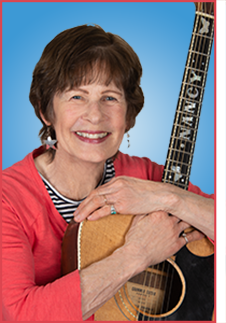

Rekha Rajan, Author for Children and Adults
Former music professor and opera singer
Instagram
Twitter/X
Former music professor and opera singer
Twitter/X

Tonnye Fletcher, M.Ed, NBCT
Children's author
K-2 Music Teacher
CCNCRA President
Host, PBJamz
Twitter/X
Instagram
FB
BlueSky
I'm available to do presentations for adults on integrating music into the classroom, connections between music and literacy, writing picture books, using picture book biographies in the classroom, conducting an afterschool writers' group, StoryWalks for Communities, or other topics. Send an email to: [email protected] for more information.
Children's author
K-2 Music Teacher
CCNCRA President
Host, PBJamz
Twitter/X
FB
BlueSky
I'm available to do presentations for adults on integrating music into the classroom, connections between music and literacy, writing picture books, using picture book biographies in the classroom, conducting an afterschool writers' group, StoryWalks for Communities, or other topics. Send an email to: [email protected] for more information.
Writing Prompts from Tonnye
- Music is. . .
- When I listen to music. . .
- My favorite song/type of music is ____ because. . . .
- THE MAGIC OF MUSIC
- Reimagining of THE PIED PIPER OF HAMELIN
- A teacher uses music to . . .
- Music has the power to . . .
- Write about a time music helped you remember something.
- Write about a special song you share with someone, or a song that makes you think of a particular person.
- Write about a time a song motivated you to do something.
- Write about a time a teacher used music to teach you something. Was that a postive experience? Why/why not?
- Write about what music means to you.
- Write an acrostic poem using the letters in MUSIC.
- Write a letter to music.
- Write a story wherein Music is the main character.
More Links and Fun!
YouTube playlist for Part 1(A) -- Puff the Magic Dragon, Encyclopedia, Onomatopoeia, Preamble to the Constitution and more!
YouTube playlist for Part B -- Teachers modeling good read aloud strategies, reading songs, fluency, etc.
YouTube playlist for Part C --
Pinterest board "Music and Literacy" full of teaching ideas that merge picture books and music or other music/literacy connections
Pinterest board "Sing a Story; Read a Song" to go along with a presentation I did for NC Reading Association annual reading conference
Pinterest board "Music Integration" which shares ideas for integrating music into many areas of the curriculum.
YouTube playlist for Part B -- Teachers modeling good read aloud strategies, reading songs, fluency, etc.
YouTube playlist for Part C --
Pinterest board "Music and Literacy" full of teaching ideas that merge picture books and music or other music/literacy connections
Pinterest board "Sing a Story; Read a Song" to go along with a presentation I did for NC Reading Association annual reading conference
Pinterest board "Music Integration" which shares ideas for integrating music into many areas of the curriculum.
PBJamz Snack -- PBJ Sandwich Cookies
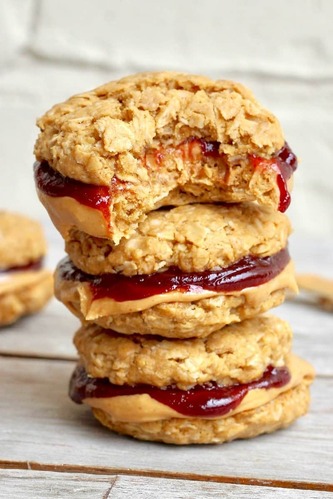
Healthy, flourless PBJ sandwich cookies are the perfect snack to share with friends, along with a GRAND conversation of your own. What you talk about is totally up to you, but the conversation will be nuttier and sweeter if it includes music and/or picture books. ;-) Find the recipe here.
Enjoy making and sharing these yummy treats.
Enjoy making and sharing these yummy treats.
GIVEAWAY ALERT!
FROM MELANIE:
Melanie has offered a signed set of all three of her books to one lucky winner! What a generous offer, and her books are awesome! You will love them!
FROM PBJAMZ:
1. Your very own PBJamz journal (Pic below)
2. Picture book critique from Tonnye (up to 600 words, non-rhyming)
To be eligible, simply leave a comment below. I'll draw 3 winners on March 7, 2024.
Melanie has offered a signed set of all three of her books to one lucky winner! What a generous offer, and her books are awesome! You will love them!
FROM PBJAMZ:
1. Your very own PBJamz journal (Pic below)
2. Picture book critique from Tonnye (up to 600 words, non-rhyming)
To be eligible, simply leave a comment below. I'll draw 3 winners on March 7, 2024.
PBJamz
This page is the official space for PBJamz -- multimedia Jamorama celebrating all things PB (picture books) and Jamz (music), although we'll indulge in the other PBJ snacks where appropriate :-). Join us each Thursday for new content connecting picture books and music!
Archives
June 2024
May 2024
April 2024
March 2024
February 2024
January 2024
November 2023
October 2023
September 2023
August 2023
July 2023
June 2023
April 2023
March 2023
February 2023
January 2023
November 2022
October 2022
September 2022
August 2022
July 2022
June 2022
May 2022
April 2022
March 2022
February 2022
Categories
Proudly powered by Weebly
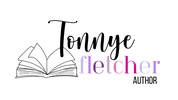
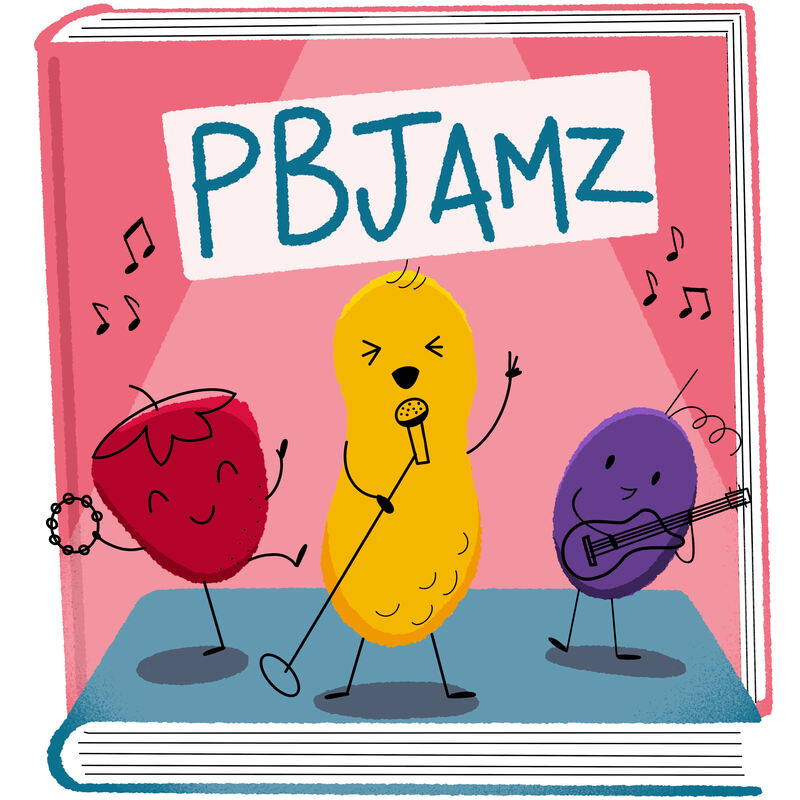











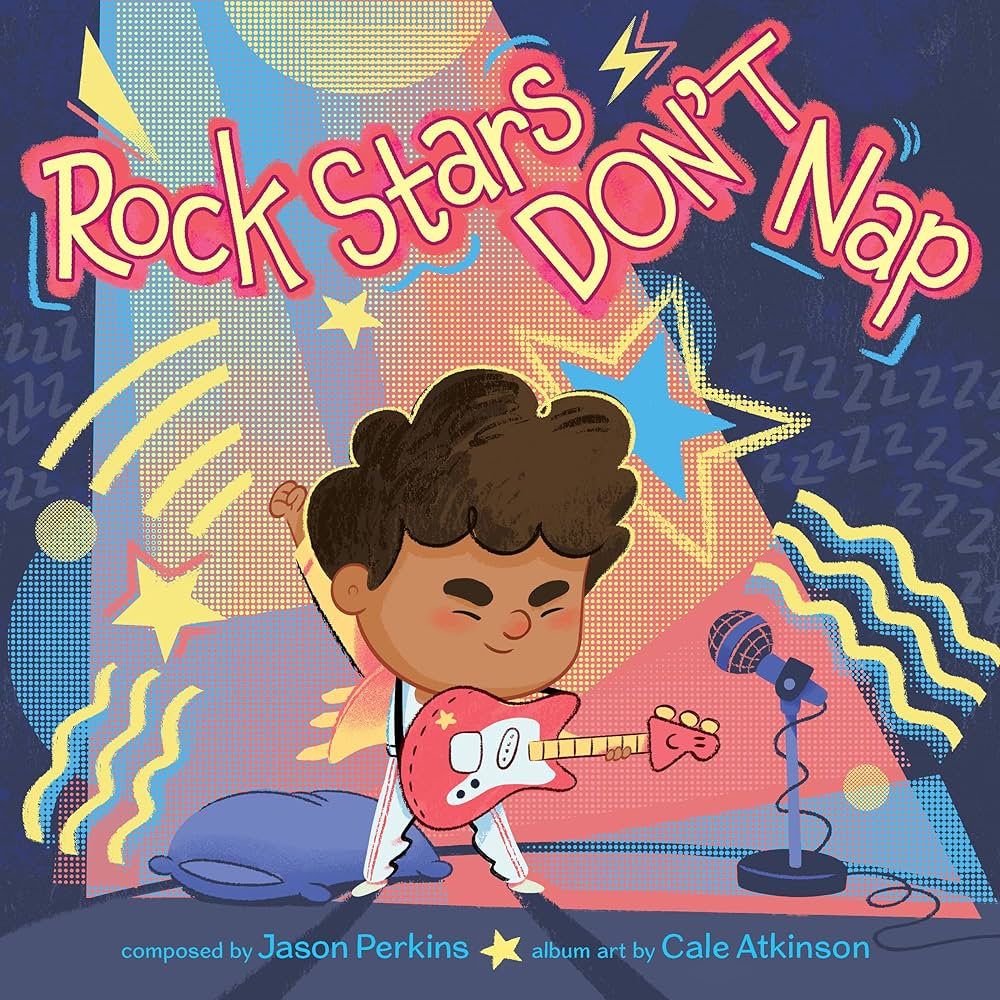
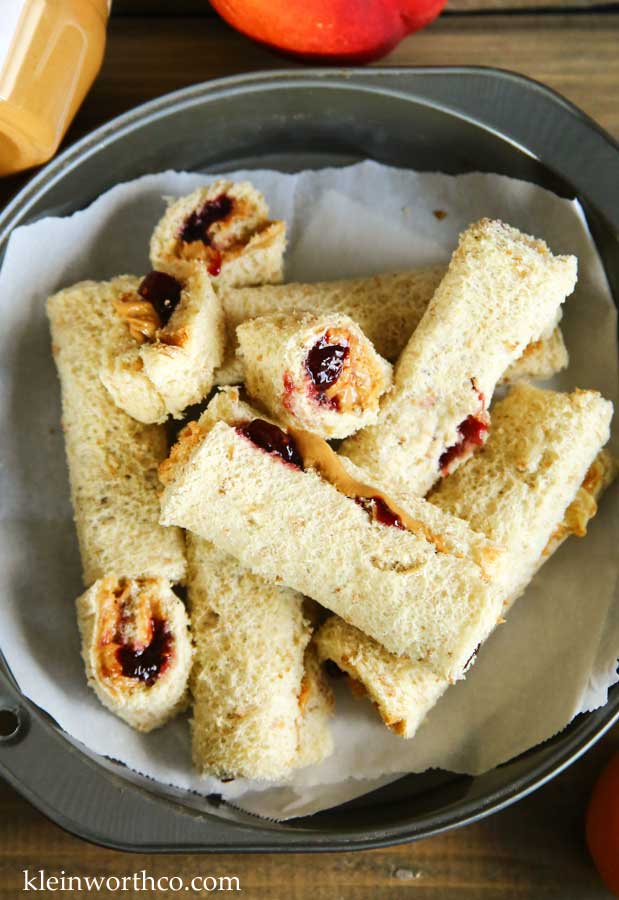

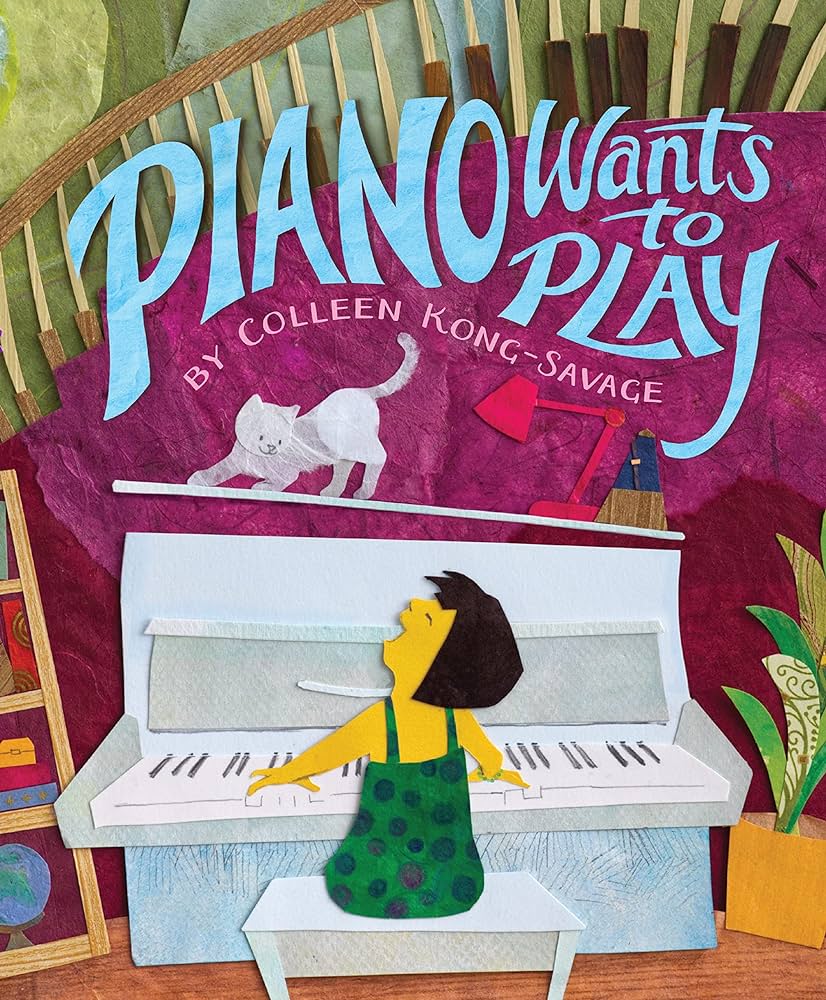
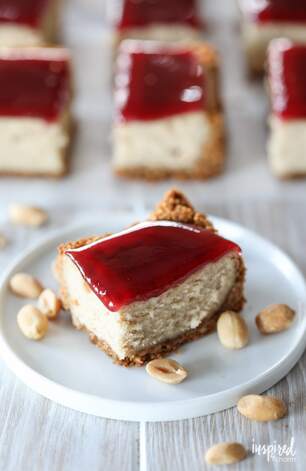
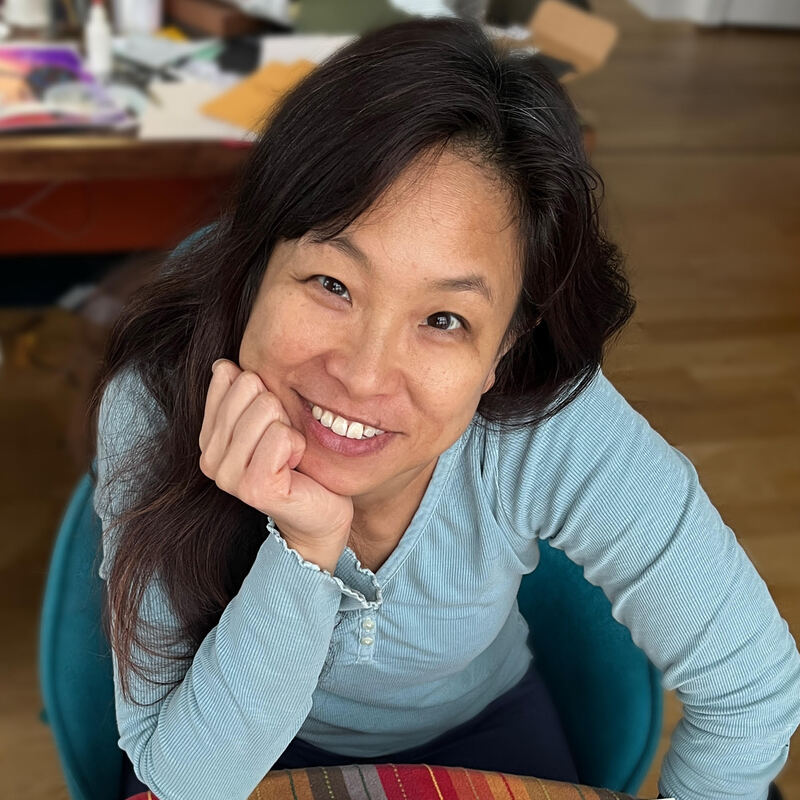
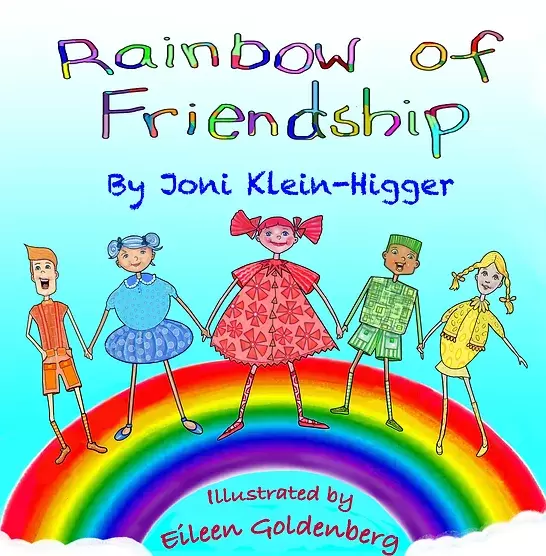
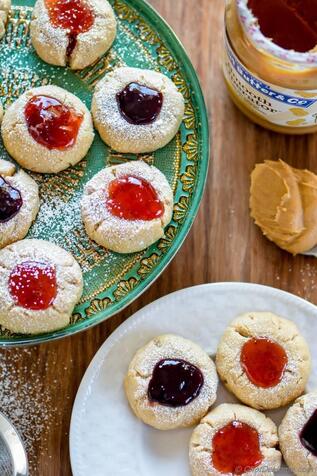
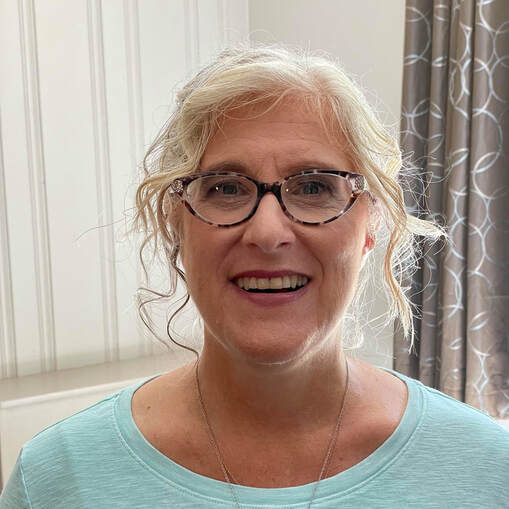
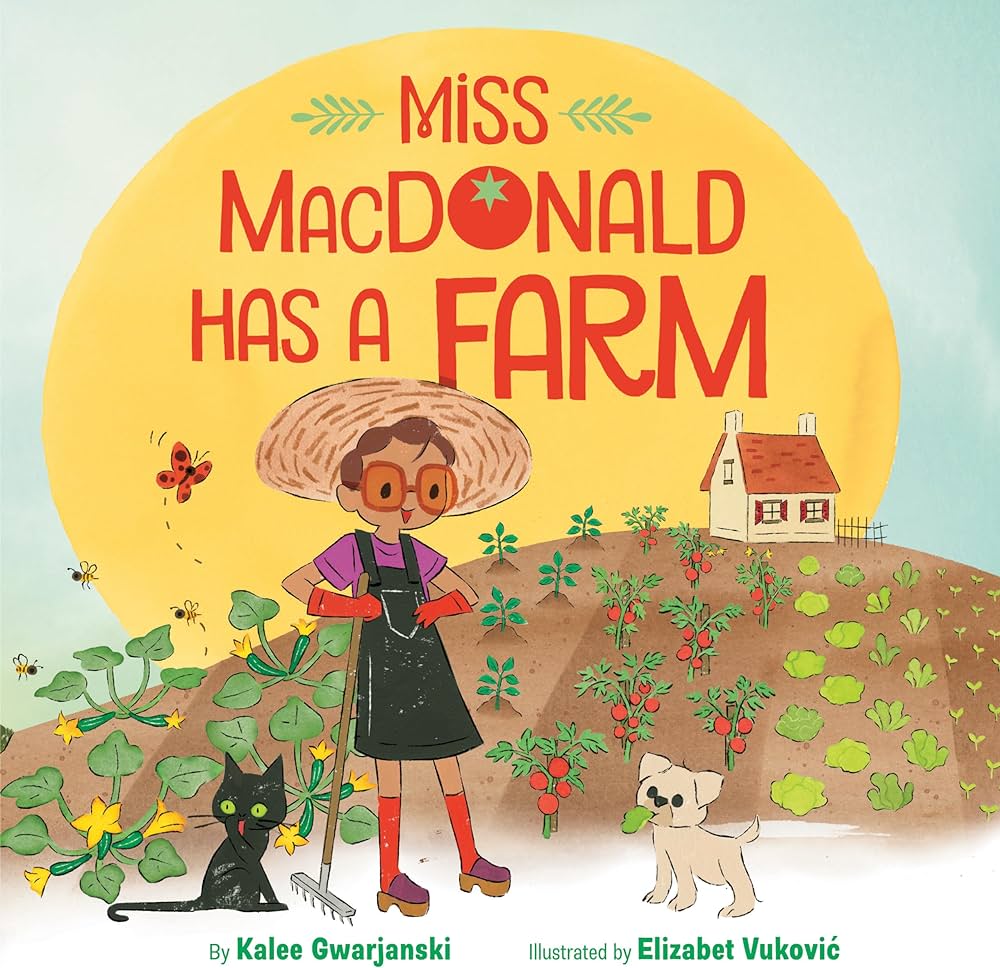
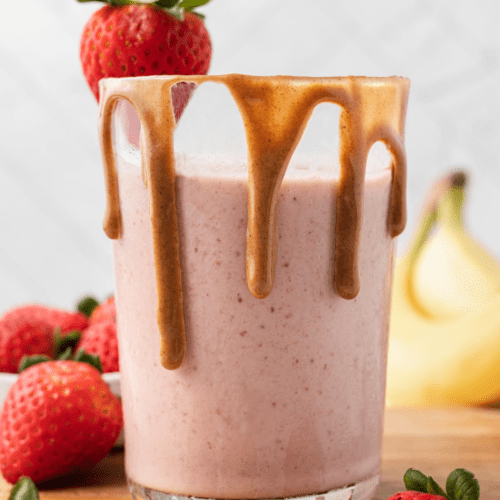
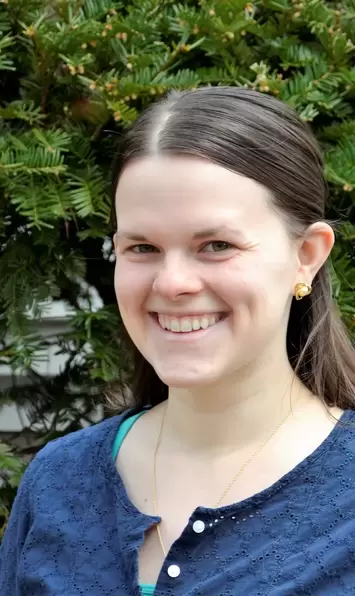

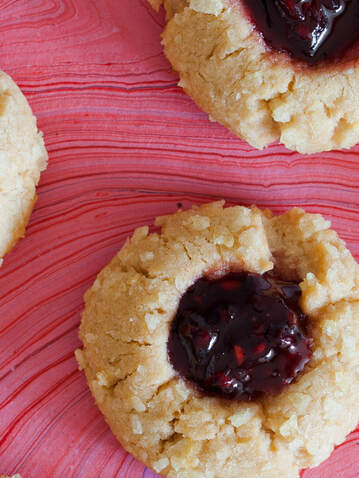
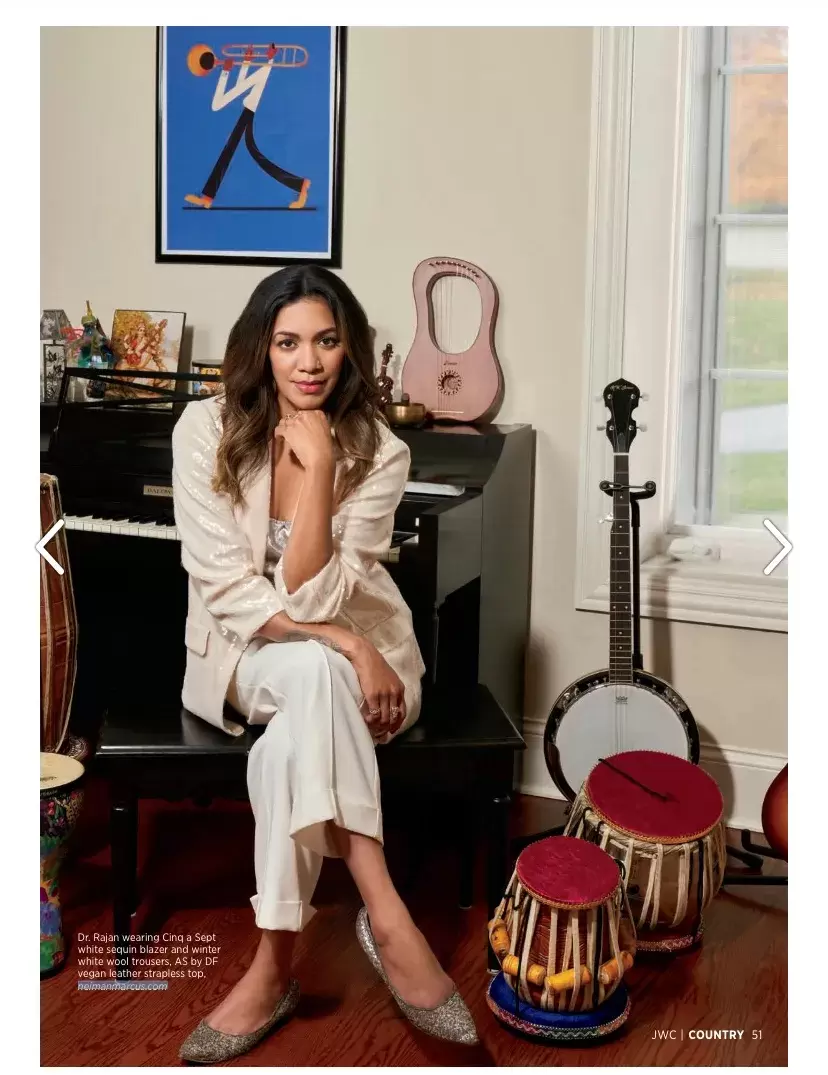
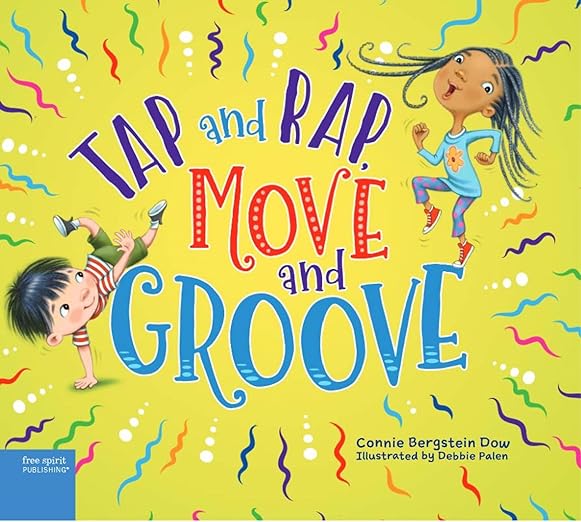




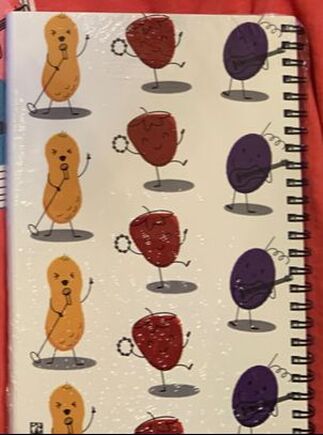
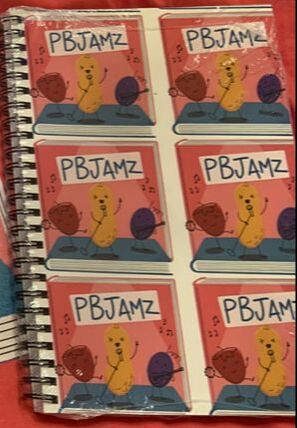
 RSS Feed
RSS Feed